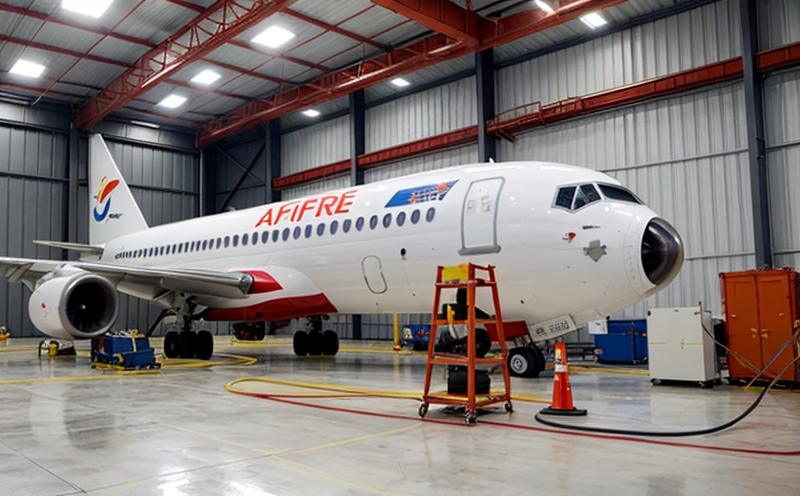FAR 25.853 Flammability of Aircraft Cabin Materials
The Federal Aviation Regulations (FAR) Part 25.853 mandate stringent flammability testing for aircraft cabin materials to ensure the safety and integrity of passengers and crew during emergencies. This regulation is a critical component of aviation safety standards, designed to prevent the spread of fire in enclosed spaces such as passenger cabins.
The primary objective of FAR 25.853 is to address the potential for fire hazards by ensuring that cabin materials do not ignite or continue burning under specific conditions. The regulation sets forth detailed requirements for testing procedures and acceptance criteria, which must be adhered to by manufacturers and suppliers.
Compliance with this standard is essential for aerospace companies involved in aircraft design, manufacturing, and certification processes. By meeting the stringent requirements of FAR 25.853, businesses can demonstrate their commitment to passenger safety and regulatory compliance, thereby enhancing their reputation and marketability.
The testing protocol outlined in FAR 25.853 involves exposing materials to controlled heat sources under defined conditions to assess flammability characteristics such as ignition temperature, flame spread rate, and smoke density. Compliance officers need to ensure that all relevant materials used within the aircraft cabin are subjected to these rigorous tests.
Manufacturers must also provide documentation detailing test results and any modifications made based on those results. This documentation is crucial for obtaining certification from aviation authorities such as the Federal Aviation Administration (FAA) or European Union Aviation Safety Agency (EASA).
Applied Standards
FAR 25.853 relies on several internationally recognized standards to ensure uniformity and consistency in testing procedures across different manufacturers and regions. These include:
- ASTM E606 - Standard Test Method for Determining the Ignition Resistance of Interior Materials
- IEC 61239-1:2014 - Fire Retardancy Requirements for Electrical Insulation and Enclosures in Aircraft Electrical Systems
The application of these standards ensures that all aircraft cabin materials meet the highest safety standards, regardless of their origin or intended use within the aircraft.
Benefits
Compliance with FAR 25.853 offers numerous benefits to aerospace companies:
- Promotes passenger safety by reducing fire risks in enclosed spaces.
- Avoids potential delays and penalties associated with non-compliance.
- Enhances brand reputation and market credibility through adherence to strict regulatory standards.
- Makes it easier for companies to secure certifications from aviation authorities like FAA or EASA.
Use Cases and Application Examples
| Material Type | Test Scenario | Expected Outcome |
|---|---|---|
| Cabin Seat Cushions | Exposure to a heat source for 60 seconds followed by a flame test. | Material must not ignite or continue burning beyond 2 inches within 1 second of the flame removal. |
| Coverings for Interior Panels | Exposure to a heat source for 30 seconds followed by a smoke density test. | Must not produce more than 25% visible smoke within the first meter of exposure. |





